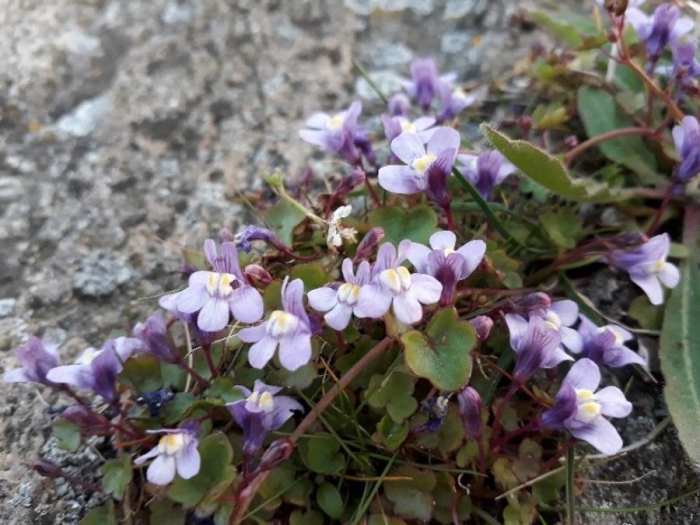Kenilworth Ivy
(Cymbalaria muralis)
Kenilworth Ivy (Cymbalaria muralis)
/
/

Florian Fournier
CC BY-SA 4.0




























































Estimated Native Range
Summary
Kenilworth Ivy is valued for its ability to cover ground quickly, making it an excellent choice for ground cover, especially in shaded areas like woodland gardens, rock gardens, and as a filler between stepping stones. It is also popular for hanging baskets due to its trailing nature. This plant is easy to maintain, requiring only moderate watering and thriving in a variety of soil types with different drainage levels, though it prefers moist, well-drained soils. It can grow in part shade to full shade, making it versatile for various garden settings. However, gardeners should be cautious as Cymbalaria muralis can become invasive outside its native range, spreading aggressively and potentially outcompeting native flora.CC BY-SA 4.0
Plant Description
- Plant Type: Herb
- Height: 0.3-0.5 feet
- Width: 1-1.5 feet
- Growth Rate: Moderate
- Flower Color: Blue, Purple
- Flowering Season: Spring, Summer, Fall
- Leaf Retention: Deciduous
Growth Requirements
- Sun: Part Shade, Full Shade
- Water: Medium
- Drainage: Slow, Medium, Fast
Common Uses
Edible*Disclaimer: Easyscape's listed plant edibility is for informational use. Always verify the safety and proper identification of any plant before consumption., Groundcover, Low Maintenance, Rock Garden, Street Planting
Natural Habitat
native to Mediterranean regions of Europe, where it thrives in rocky habitats, walls, and cliffs, as well as in damp, shady spots
Other Names
Common Names: Ivy-Leaved Toadflax, Coliseum Ivy, Oxford Ivy, Mother Of Thousands, Pennywort, Wandering Sailor, Mauer-Zymbelkraut, Zymbelkraut, Cymbalaire, Muurleeuwenbek, 덩굴해란초
Scientific Names: , Cymbalaria muralis, Cymbalaria muralis f. muralis, Linaria toutonii, Linaria cymbalaria var. albiflora, Cymbalaria muralis f. triloba, Antirrhinum cymbalaria, Linaria cymbalaria var. antirrhiniflora, Linaria cymbalaria var. minor,
GBIF Accepted Name: Cymbalaria muralis P.Gaertn., B.Mey. & Scherb.